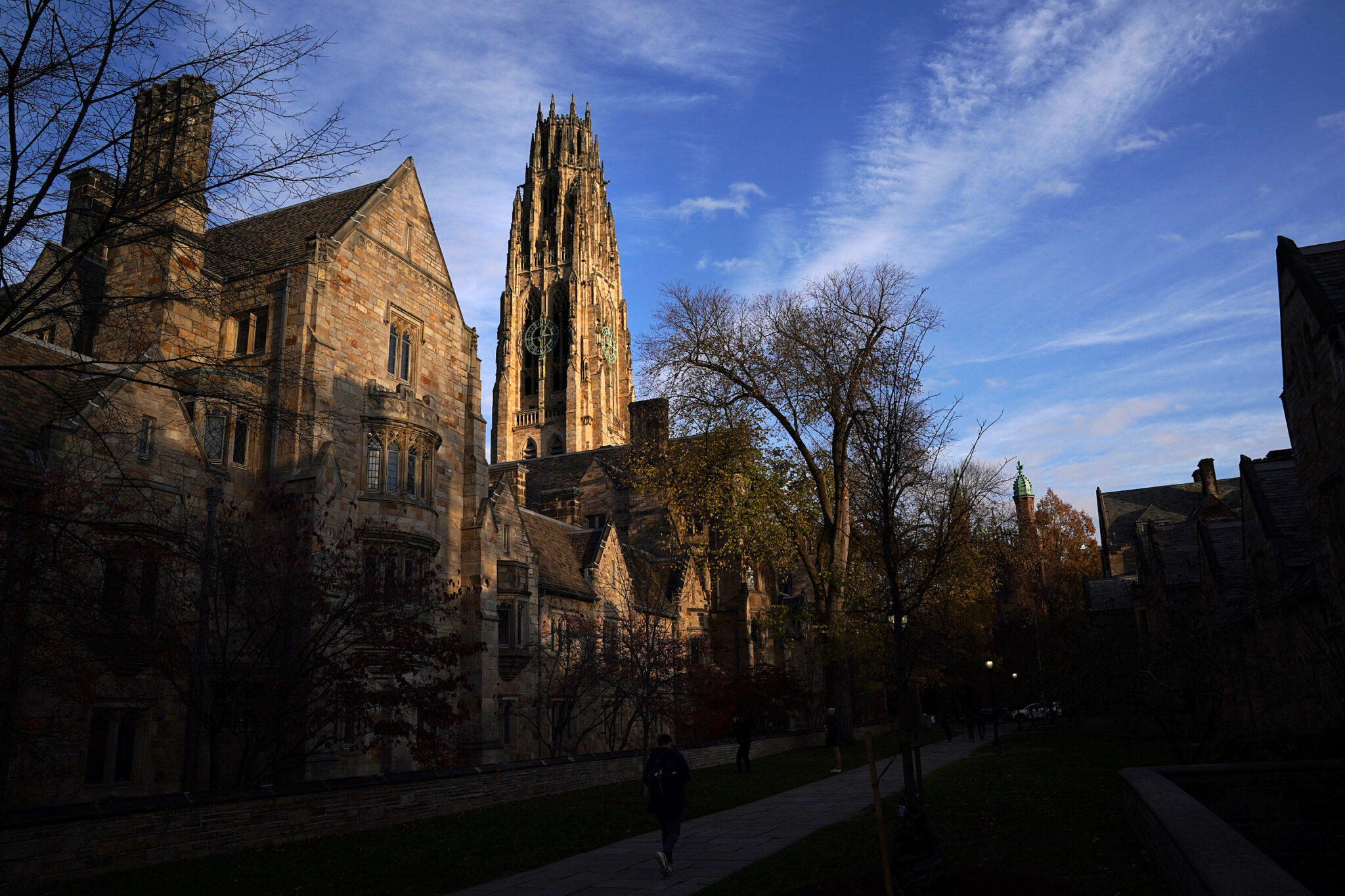Faculty and administration raise alarm on grade inflation, ‘no plans’ to change grading policy
In response to a grading report obtained by the News in November, professors in various departments spoke about the causes of rising grades, potential solutions and how grade inflation may affect Yale academics moving forward.

Tim Tai, Senior Photographer
Recent reporting by the News revealed a decade of previously unpublished grading data. All but one of the eight faculty members and administrators interviewed by the News expressed concerns about rising grade inflation.
The data showed a spike in grade inflation during the 2020-21 school year, at the height of the COVID-19 pandemic. Three years later, grade inflation at Yale has yet to return to its pre-pandemic rate.
“Grade inflation is a problem in that it undermines our ability to recognize true excellence,” Edward Rugemer, director of undergraduate studies for history, wrote the News. “But I do not think this is a Yale problem alone. At present, the History Department is not taking any measures to reduce grade inflation.”
Yale’s report indicates that, in 2020-21, the percentage of Yale College A-range grades — including A’s and A-’s — rose from 72.95 to 81.97 percent, while the mean GPA rose from 3.64 to 3.74. By the 2022-23 school year, these figures stand at 78.97 and 3.70 percent, respectively. A recent story by The Harvard Crimson indicates that 79 percent of grades awarded at Harvard College in 2020-21 fell in the A range.
Data on Yale’s grading distribution have not been available in over a decade prior to the November report, which was sent to the News with the permission of Dean of Yale College Pericles Lewis in the interest of “promot[ing] transparency.”
Lewis did not respond to a request for comment, but Senior Associate Dean of Strategic Initiatives and Communications Paul McKinley confirmed that there are “no changes planned to address grade compression this year.”
Professor Meg Urry, chair of Yale’s FAS senate, said that grade inflation is not a topic the senate has discussed, adding that she does not think it would rise to a more “prominent level.”
But Shelly Kagan, a professor of philosophy known for being a “difficult grader,” told the News about his concerns with “grade compression.”
Kagan explained that unlike price inflation, which is countered by steadily raising prices, grading has an upper bound, with nowhere to go above A. Yale does not use A+, although Kagan speculated on the possibility of introducing it.
“That leads to grade compression, where A’s no longer impart any genuinely useful information, whether to the students or to others who might look at the transcripts,” Kagan said. “That is very unfortunate.”
Kagan added that it “never ceases to surprise” him how Yale students and fellow faculty members view grades below A’s as bad, despite how Yale defines a B as “good.”
Although the grading report indicated a shift in grade inflation with the start of the COVID-19 pandemic, Kagan speculates that it has existed since the 1960s.
He explained that grade inflation is self-reinforcing, becoming more prevalent as more and more professors give out A’s to avoid disappointing students.
“The more A’s are handed out, the more disappointed students are to not receive an A,” Kagan told the News.
Yale attempted to combat grade inflation in 2013, when then-Yale College Dean Mary Miller created an “Ad Hoc Committee on Grading” to address climbing mean GPAs. Two of the committee’s proposals passed, one allowing department chairs to see an annual report of the previous year’s grade distributions for all departments, and the other an annual departmental meeting to discuss grading practices, with chairs reporting these discussions to the Dean of Yale College.
But the other two committee recommendations, which proposed a change from letter grades to numerical grades and the establishment of non-mandatory grading guidelines, were rejected by Yale’s faculty.
“If this upward trend does not cease, grades will continue to lose meaning both internally and externally; our entire academic endeavor is in jeopardy,” Miller wrote in a spring 2014 report. “Even as we continue discussions in Yale College, I ask you to take steps immediately to be sure that grades rise no further.”
At the time, the most up-to-date data indicated that 62 percent of grades awarded to Yale College students in spring 2012 fell in the A-range.
Stefanie Markovits, director of undergraduate studies for English, attributed the rise in grade inflation to increased opportunities for students to submit drafts and revisions. Many hardworking students, who previously would have received B+’s, she said, now receive an A-.
“The papers are better for the work they put in, and I think they have learned a lot in the process,” Markovitz said. “So I personally am happy to live with this particular part of the ‘inflation,’ whatever feelings I have about the rest of it.”
She added that, as DUS, her approach has been to remind colleagues at regular intervals to only give A grades to the strongest students, rather than those who are capable and hard-working but not extraordinary.
Michael Surry Schlabs, the DUS of Architecture, said that grade inflation routinely comes up in faculty meetings, and that most faculty members would like to see GPAs return to a pre-pandemic level, at least. But he expressed skepticism at this possibility.
“Until college GPA stops being a major concern in employee hiring and grad school admissions decisions, I don’t know how we solve this, short of ditching A-F grades altogether, in favor of more personalized evaluation methods,” Schlabs said. “That wouldn’t be a bad thing, in my opinion, but it does sound like an awful lot of work.”
Professors have the option to fill out an end-of-term report for students who do “truly exceptional work.”







